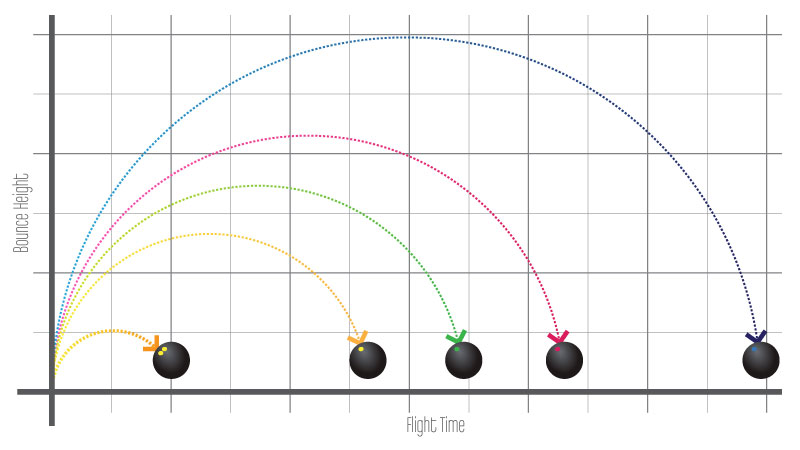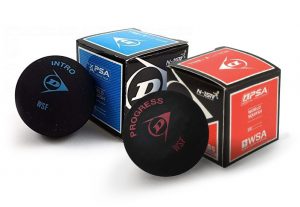[Updated on 1 January 2024] One of the things that makes squash a little different, however, is the squash ball itself. Unlike other balls for other sports, a squash ball has to be warmed up properly before you start playing. Otherwise, the ball simply won’t have the bounce it needs for you to enjoy the game properly.
Contents
What You Need to Know About Squash
If you’ve never played squash before, you owe it to yourself to give it a try. Squash is played indoors with racquets and balls that are usually black in color and which you hit against the wall so your partner can return it. There are six main types of squash balls, four of which are for adults and two are for children. The adult squash balls have either one or two dots on them, and they are broken down like this:
- Two yellow dots: called the Pro, this ball is only for super-advanced players
- One yellow dot: this one is called the Competition ball and should only be used by those with experience
- One red dot: called the Progress ball, it is a little bigger than the Pro ball and is meant for recreational players
- One blue dot: this is the Intro ball and is meant for beginners

Some people are surprised that squash balls have to be warmed up before you start playing with them, especially since you don’t have to do this with other sports balls. But there is, in fact, a method to the madness because there are legitimate reasons for having to warm up a squash ball before you start a game.
Why Warm up a Squash Ball?
Unlike other types of sports balls, squash balls need to be warmed up before you play with them, for one simple reason: they won’t bounce correctly if they are too cold. The temperature of the squash ball and court temperature are actually related, because even if the indoor temperature is comfortable, a cold court floor may keep your ball less than bouncy.
Fortunately, warming up a squash ball is very easy because all you have to do is hit it against the wall for a few minutes. When you do this, the air inside of the ball starts to get warm and pressure starts to build up, and this causes the ball to have more bounce.

You may have to hit the ball for several minutes before you can start playing with it. You’ll know immediately if the ball isn’t warm enough because it won’t bounce well. Should that happen, it’s just a sign that you need to hit the ball against the wall for another minute or two.
Also keep in mind that the Intro ball, which is used for beginners, needs no warming up before play time, and the Progress ball will likely need to be warmed up only for a minute or two.
Do Squash Balls Need to Be Replaced?
Just like tennis or other sports balls, squash balls will have to be replaced periodically. Squash balls are made out of two plastic halves, and eventually, enough air leaks out of them to cause the balls to stop bouncing properly. When this happens, and you know the ball is warmed up properly, it is time for a new squash ball.
Just how long does a squash ball last? There is no hard-and-fast answer because the lifespan of a squash ball depends on many things, including how hard the ball is hit by the players and the type of ball it is. Just know that whether it’s been a few months or even a year or more since you last purchased a squash ball, and if the bounce is less than perfect, you’ll need to pay a visit to the sporting goods store.
Fortunately, squash balls are a lot less expensive than you might think. They can be sold individually, in tubes of three, and even in boxes of 12. A tube of three, even one made by a reputable company, will only cost you around $10, so keeping a few extra balls in your gym bag at all times is never a difficult thing to do.
Getting Back to Warming up Your Squash Ball
So, let’s get back to warming up your squash ball. In colder seasons, you may notice that your ball doesn’t have the bounce it needs to play the game properly. In fact, you may even notice that you have to stop periodically while the game is going on to warm up the ball again. Cold air affects the squash ball, even though you’re safe inside of a nice warm squash court.
Since squash is played so often during the winter months, it is especially important that you realize how crucial it is to make sure the ball is properly warmed up before and even during your game. After all, the last thing you want is to start playing the game, hit the ball, and have it plunk down on the floor like it’s just dead weight!
If you’re curious about the best way to warm up your squash ball, keep in mind that volleying is one of the fastest ways to do it. In other words, hit the ball repeatedly right down the line but high up on the wall, and continue hitting it without letting it hit the floor.
If it hits the floor, it may take a little longer to warm the ball up properly. You can hit it up on the wall three times then let your partner do the same thing, and you can take turns to keep the ball going until it is properly warmed up and ready to go.
We mentioned the temperature of the court earlier, so let’s go back to that. The temperature of the court can affect a lot of things, including the temperature of both the walls and the floors. What can you do about it? Ideally, you should put the heater on before you start playing so that it’s at the right temperature once you get there.
Speaking of temperature, many experts consider the optimum court temperature to be about 68° Fahrenheit or 20° Celsius. The closer you can keep the court to this temperature, the less difficult it will be to warm up your squash ball and keep it warm enough while you’re playing. This isn’t always possible, of course, especially if you play in a public gym or fitness center.
Conclusion
The warmth of your squash ball is important and should never be underestimated. More often than not, it is a simple task to get the ball warmed up properly, even though you may have to do so for 10 to 15 minutes to get it warm enough for play.
It also helps to keep the balls in a warm place when they’re not being used – keeping them in the trunk of your car when it’s cold outside can be a disaster, and you’ll want those balls kept as warm as possible so that the start of your game is never delayed. This is easy to do and can save you a lot of time once you get on the court.

Leave a Reply